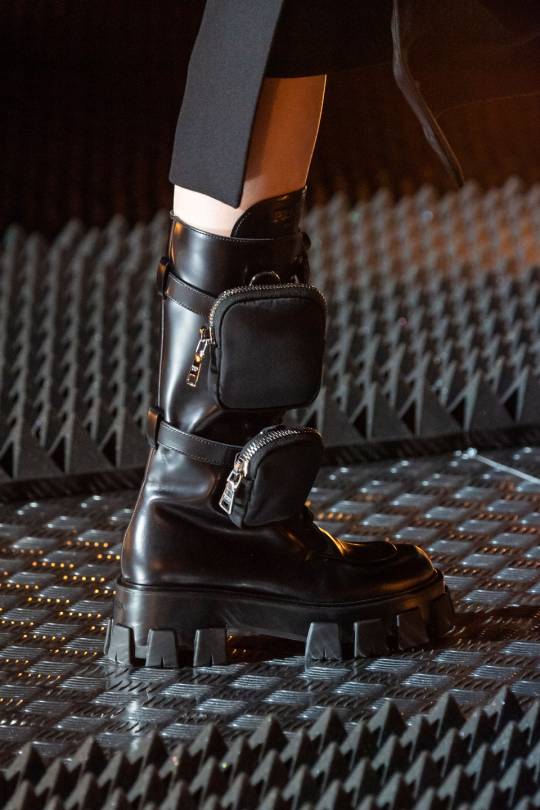#Paris fashion week 2017
Text



Alexa Chung outside Dior during Paris Fashion Week (2017) via
#dior#alexa chung#candid 2017#pfw 2017#paris fashion week 2017#2017#candid#pfw#paris fashion week#event 2017#event
16 notes
·
View notes
Text





#alessandra ambrosio#supermodel#beauty#celebrities#celebrity#brazilian model#balmain#fashion show#paris fashion week#2017
17 notes
·
View notes
Photo



120 notes
·
View notes
Text

9 notes
·
View notes
Text

5 notes
·
View notes
Text


prada f/w '17 combat boots ✶
#prada#prada shoes#high fashion#hf#couture#haute couture#ready to wear#fashion#goth fashion#punk fashion#paris fashion week#pfw#2017#aesthetic#contemporary style#fall winter#boots#combat boots
5 notes
·
View notes
Photo








Masha Ma at Paris Fashion Week Fall 2017
#fashion#masha ma#runway#runway fashion#pfw#paris fashion week#2017#fall#fall fashion#autumn fashion#alt#alternative#outfit#style#trend#trendy#ship inspo#punk
24 notes
·
View notes
Text



Rihanna on stage at Paris Fashion Week as designer for Fenty x Puma Collection, 2017
5 notes
·
View notes
Photo


Saint Laurent f/w 2017 rtw
Creative Director Anthony Vaccarello
Photographer Marcus Tondo
Source
#newest cool#newestcool#saint laurent#ysl#yves saint laurent#ysl beauty#ysl bag#saint laurent paris#Paris fashion week#pfw#fall/winter#f/w 2017#fw17#fw 2017#ready to wear#net-a-porter#runway collection#swarovski#embellished dress#silver dress#maxi dress#runway look#runway photo#Anthony Vaccarello
8 notes
·
View notes
Photo

Photo by Antonio de Moraes Barros Filho on Getty Images|Bella Hadid walks the runway during the Alexandre Vauthier Haute Couture Spring Summer 2017 show as part of Paris Fashion Week on January 24 2017 i
1 note
·
View note
Photo

bkstg Fenty rihanna fall 2017 collection Paris fashion week PFW
#bkstg#fenty#rihanna#fall 2017#rihanna collection#paris fashion week#pfw#2017#white#fashion#sporty#sportif
1 note
·
View note
Text

Model Doutzen Kroes attends Loewe show SS 2018, Paris Fashion Week 2017
✴️ Models in Leather
137 notes
·
View notes
Text

5 notes
·
View notes
Text

2 notes
·
View notes
Text
youtube
A 2022 report by RealClearPolitics confirmed what many Europeans had long suspected but could not prove because of data obfuscation by individual governments: Europe has a massive immigrant violent crime problem.
The 10-year data study showed that across the EU, “each one percentage point increase in immigrant population is associated with a 3.6 percent increase in the homicide rate.” In Germany, where police and politicians fiercely guard immigrant crime statistics, an academic study found that asylum applicants were responsible for a massive 10.4 percent rise in violent crime in Lower Saxony alone in 2015 and 2016, an apparent effect of Angela Merkel’s 2015 open-doors migration policy. It is a familiar pattern across Western Europe’s industrial hubs. In the first half of 2022, foreign nationals committed 70 percent of the violent robberies in Paris. Another academic study in Sweden found that in 2017, immigrants accounted for 73 percent of all cases of manslaughter, murder, and attempted murder.
To the residents of Ireland, however, the human carnage unfolding on the continent had been abstract. Traditionally protected from the dangers of mass unvetted migration due to being an economic backwater, the spectacular economic boom of the ’90s and early ’00s spurred a massive influx of migrants to such a degree that now more than 20 percent of the Irish population is foreign-born. In 2022, Ireland had its reckoning with migrant crime. Predictably, the government attempted to cover it up.
A Brutal Murder
On the afternoon of Jan. 12, 2022, Ashling Murphy, a talented musician and teacher, was set upon and murdered in brutal fashion. The 23-year-old was stabbed 11 times in the neck while walking along the bank of the Grand Canal in Tullamore, County Offaly. The savage nature of the attack and the fact that it occurred in broad daylight sent shockwaves through the country.
Three days after the murder, The Irish Times printed a piece quoting “an epidemic of femicide” and “a culture of misogyny” in Ireland. Similarly, The Guardian asked if Murphy’s murder would change Ireland’s “culture of misogyny.” National soul-searching had begun, and the narrative that emerged was that Ireland’s men were to blame.
Dozens of vigils were held across the nation, promoted by the Women’s Council of Ireland (NWC). Speaking to a crowd of thousands outside of government buildings in Dublin, the head of the council, Orla O’Connor, stated, “The death of Ashling Murphy must be a watershed moment to end violence against women.” Helen McEntee, Ireland’s minister for justice, tweeted, “I am working to ensure we have a society that does not tolerate this any longer.”
In an official statement, Prime Minister Micheal Martin said, “We have spent much of the past week … questioning our attitudes towards women. Are we doing anything to help? Are we doing enough to help? Are we part of the problem?” Irish men hung their heads in shame as the magnitude and ferocity of their misogyny was hammered home.
But then the narrative hit a speed bump. On Jan. 18, Jozef Puska, an immigrant from Slovakia, was arrested. It would later emerge that Puska was a convicted sex offender in his native country. He had further reportedly been a person of interest in two assaults, one in Prague shortly before moving to Ireland and one in England while living in Ireland. The narrative of misogynistic Irish men should have died on the day of Puska’s arrest. It didn’t.
Blaming Misogyny
In June 2022, Justice Minister McEntee announced a five-year strategy that would update “school curricula to include consent, coercive control, domestic violence and safe use of the internet.” The move was deeply cynical as it was McEntee’s own party that had allowed Puska, the convicted sex offender, to enter the country 10 years earlier. Rather than acknowledge those failings, she deflected blame for Murphy’s murder onto the boys and men of Ireland.
The last part of her initiative, “safe use of the internet,” is particularly important as McEntee is the minister behind the draconian Criminal Justice Bill, or “hate speech bill,” which recently caused an international storm after Donald Trump Jr. called it “insane” and Elon Musk promised legal action to halt it. Not only did McEntee use the murder of Murphy to deflect from government failings on mass migration, but she also used it to sell her highly unpopular “hate speech” laws.
On the one-year anniversary of Murphy’s murder, the Irish Examiner published a lengthy piece shaming the men of Ireland. The paper quoted Orla O’Connor, who resoundingly supported McEntee’s strategy: “[W]e must also tackle the root cause of this epidemic. … We must educate our children about the misogyny that underlies male violence against women. There is a gap left by our education system.” It didn’t matter that Puska wasn’t a product of Irish society or the Irish education system.
The ‘Femicide’ Narrative
The same article pointed out that 2022 had been the worst year for violence against women and ultimately femicide in Ireland in a decade, with 12 women dead as a result. However, the data does not support claims that there is a femicide epidemic in Ireland, much less the idea that indoctrination of the nation’s boys is the cure.
Of the 12 women murdered in Ireland in 2022, five were killed by nonintegrated immigrants. Jozef Puska murdered Ashling Murphy. Romanian Andrei Dobra is awaiting trial for the murder of his fiance, Ioana Mihaela. Romanian Daniel Blanaru is awaiting trial for the murder of his partner, Larisa Serban. German Guenter Lohse is awaiting trial for the murder of his elderly mother, Ruth. Brazilian Miller Pacheco is awaiting trial for the murder of his former partner, Bruna Fonseca. All of the alleged killers needed translators throughout their court appearances. These women’s deaths are apparently the direct result of failed, open-border migration policies.
The nationality of the person who assaulted Louise Muckell, which likely caused her death, hasn’t been made public yet. Muckell herself killed a father of two in 1996 in a drunk-driving incident, and police are investigating a circle of her friends described as having “serious alcohol dependency issues.” Mary Bergin was allegedly murdered by her daughter, though journalists and activists leave out this detail when including her in the “femicide epidemic” in Ireland.
None of these seven women were murdered by misogynistic Irish men.
Other Causes
Of the remaining five female victims, Lisa Cash, Miriam Burns, and Sandra Boyd were allegedly killed by family members. Lisa Cash, 18, and her twin brother and sister, 8, were allegedly killed by their older brother. The Irish Examiner article cynically included Lisa in its femicide list because she was 18 and legally a woman, removing the fact that there was apparently no sex-based motivation. Similarly, including the accidental shooting of Sandra Boyd by her brother is misleading when used to prop up a narrative that there is a plague of intentional misogynistic murders of women in Ireland.
Like Bergin, the Burns murder was also allegedly by a family member, which would make both of those deaths parricide, meaning the murder of a parent by her child. These murders usually take place after a lifetime of family conflict. Including these family killings in an emergency “femicide epidemic” is again misleading.
Of the remaining two murders, Lisa Thompson’s death, like Louise Muckell’s, was apparently substance abuse-related. A man and a woman, alleged drug dealers, have been arrested as part of the murder inquiry, and both were known to the victim, a suspected drug addict, whose apartment was allegedly being used for the duo’s drug storage. Thompson and Muckell were likely not targeted for their sex but because of their tragic lifestyle choices.
This leaves one murder of a woman in Ireland in 2022 that was allegedly committed by an unrelated Irish male. Sean Egan is currently awaiting trial for the murder of Sharon Crean. One woman’s alleged murder by an Irish male is extremely low for a country of 5 million people.
Close the Border
There is clearly no “epidemic of femicide” native to the Irish, and this is backed up by international data. Ireland consistently ranks among the lowest for violence against women in the EU. There is, however, a problem with open borders in Ireland. Almost half of the women murdered in Ireland in 2022 would still be alive if their killers had not been allowed into the country.
Politicians such as Helen McEntee and Micheal Martin coopted the death of Ashling Murphy to cover for their disastrous migration policies. With the help of the Irish press and activists like Orla O’Connor, they gaslit a nation into believing women were in mortal danger from native Irish men. They used this fear to push through radical feminist school curriculum reform and to sell their war on free speech.
The reality is that Ireland’s rate of deadly violence against women could be slashed by up to half through sensible migration policy and even further by mental health and substance abuse programs. The government does not wish to undertake these achievable goals because that would require them to acknowledge their role in the deaths of these women. It’s much easier to preach on the corpses of innocent victims and shame the men of Ireland.
79 notes
·
View notes
